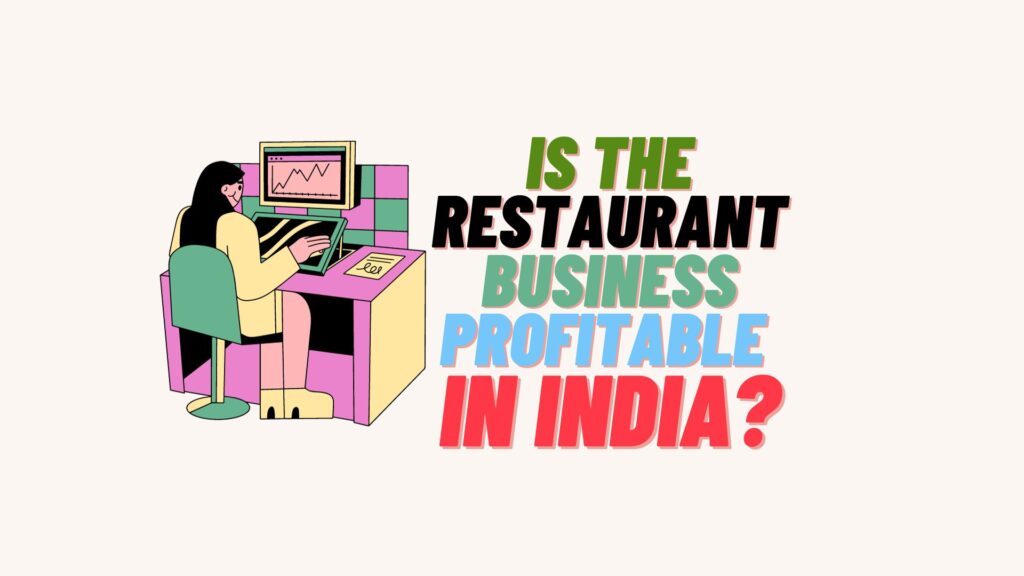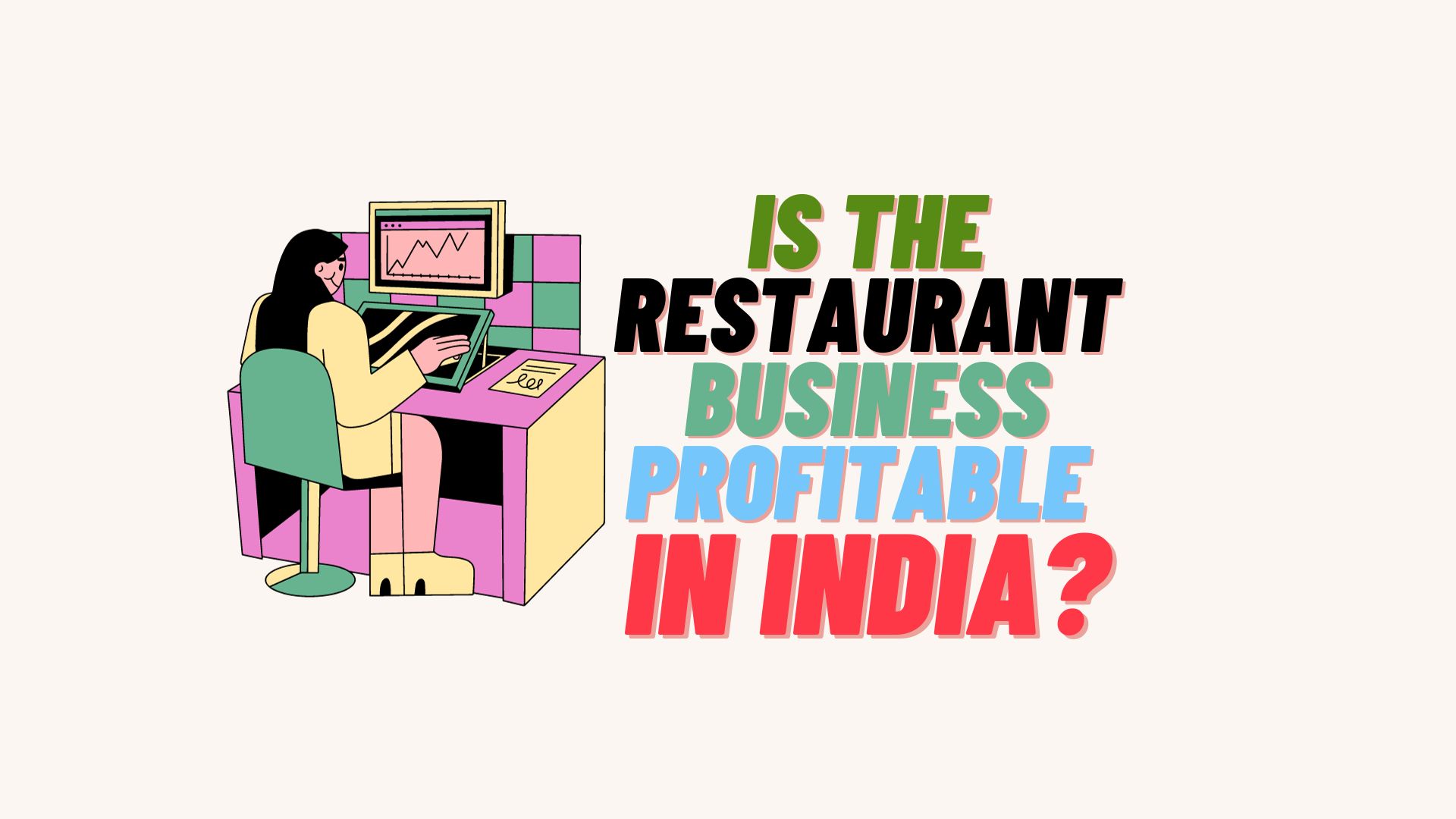Have you ever wondered – if the restaurant business is profitable in India? With rising costs, it seems challenging for many eateries to survive. But what if the outlook isn’t so gloomy after all?
According to the report, the Indian food sector is expected to grow at a compound annual growth rate of 10% per year (2020-2025), with global fast-food firms dominating the significant segments. Are you intrigued and eager to learn more? This article analyzes the proper growth and earnings potential within India’s rapidly expanding food service industry.
Let’s look at several excellent food company strategies poised for success in 2023 and beyond!

5 Reasons You need to start restaurant business in India
1. Rising Incomes Expand Customer Base:
With higher disposable incomes and an expanding middle class, there’s a noticeable shift in consumer behavior toward increased discretionary spending on dining out.
This change is not confined to specific price points but spans across various segments of the restaurant industry. As more Indians are choosing to eat out more frequently, this surge in demand is proving to be a significant driver for the growth of the restaurant sector.
2 Tourism and Food Experience Economy Booming:
The robust growth in Indian tourism is intricately linked with the rising importance of food experiences in travel itineraries. Travelers are increasingly seeking unique and authentic culinary experiences, contributing to a substantial uptick in revenue for restaurants catering to this segment.
Culinary tourism, where exploring local flavors becomes an integral part of the travel experience, presents immense opportunities for the food and beverage industry.
3. Supportive Government Initiatives:
Government-backed initiatives such as the PM FME scheme and MUDRA loans are playing a pivotal role in encouraging entrepreneurship within the food and beverage sector.
By mitigating risks and lowering financing costs for new ventures, these programs provide a conducive environment for individuals to explore and establish themselves in the dynamic F&B landscape.
4. Advent of Food Tech Ecosystems:
The landscape of the restaurant industry is being reshaped by the advent of food tech innovations. Online delivery platforms, cloud kitchens, and logistical advancements are not only expanding the reach of traditional restaurants but are also revolutionizing operational models.
Technology is proving to be a catalyst for efficiency, helping businesses optimize supply chains and enhance overall operational effectiveness.
5. Global Cuisine Adaptations for Indian Palate:
A noteworthy trend in metro foodie cultures is the increasing popularity of global cuisines adapted to suit the Indian palate. Whether it’s the introduction of Mexican tacos or the embrace of Korean BBQ, this trend represents a cultural fusion that resonates with a consumer base willing to experiment with diverse flavors.
The key differentiator for restaurants lies in their ability to creatively blend international elements into local cuisines, offering patrons a unique and innovative dining experience.
Rise of Food Influencers and Social Media Impact:
The emergence of food influencers on various social media platforms has become a noteworthy trend shaping the restaurant industry.
The constant sharing of food experiences through videos and images has created a digital ecosystem where culinary delights take center stage.
As people increasingly consume a plethora of food-related content daily, there’s a direct and indirect positive impact on the restaurant business.
1) Direct Promotion and Visibility: Food influencers often collaborate with restaurants to showcase their offerings. These collaborations act as a direct promotion, reaching a wide audience and creating visibility for the establishment. The power of a well-crafted food post or video recommendation can drive foot traffic and increase reservations.
2) Indirect Cultural Influence: Beyond direct collaborations, the constant exposure to diverse cuisines through influencers indirectly influences consumer preferences. It sparks curiosity and a desire to explore new culinary experiences, benefiting restaurants that offer unique and Instagram-worthy dishes.
3) Online Reviews and Reputation: Food influencers often share honest opinions about dining experiences. Positive reviews can significantly boost a restaurant’s online reputation, attracting new customers. Conversely, negative reviews may prompt improvements and highlight areas for enhancement.
What is the average profit margin of a restaurant In India?
Running a profitable restaurant in India is possible, but it takes hard work. According to industry associations, restaurants in India make around 10-20% profit margin. This means for every 100 rupees earned, 10-20 rupees is profit.
The remaining money gets used to pay rent, staff salaries, food ingredients, electricity bills, and other operating costs. So, costs need tight control, and customers must keep coming regularly.
New owners can aim for profits by choosing the right location, managing food costs wisely, promoting deals, and getting loyal repeat customers. Also, focus on food quality and good service. This helps save on advertising expenses.
With planning, a restaurant’s profit margin can increase to 25%. So, the hard work pays off through higher earnings. The demand for eating out and ordering in is also growing in India due to lifestyle changes. This is good news for those starting new food business ventures.
Challenges in Managing Target Costs for Restaurants
1. Managing Costs Efficiently:
Balancing the restaurant industry’s financial equation requires a comprehensive cost management approach. The intricate dance of controlling expenses involves setting budgets and executing strategic initiatives.
Successful operators delve into meticulous menu planning, ensuring each dish optimizes ingredient costs without compromising quality. Furthermore, tricky staff scheduling becomes critical, aligning labor costs with demand fluctuations to maintain operational efficiency.
Equally vital is the art of negotiation with vendors and landlords, seeking favorable terms that contribute to the bottom line without sacrificing the integrity of the dining experience.
2. Building and Sustaining Customer Loyalty:
In the fiercely competitive realm of restaurants, cultivating and sustaining a loyal customer base is an ongoing challenge. This endeavor extends beyond providing a delicious meal; it encompasses creating an entire dining experience.
Restaurants must consistently deliver high-quality food, coupled with exceptional service, to leave a lasting impression on patrons.
Implementing customer relationship management (CRM) strategies becomes paramount, as understanding customer preferences and feedback becomes a tool for tailoring experiences that resonate with individuals, fostering loyalty, and encouraging repeat visits.
3. Addressing Staffing Challenges:
The transient nature of the restaurant workforce poses significant staffing challenges. Hiring and retaining skilled chefs, servers, and support staff require more than traditional recruitment strategies.
Successful establishments invest substantially in comprehensive training programs, ensuring that employees are equipped with the skills and knowledge necessary to excel in their roles.
Beyond this, the implementation of incentive structures and recognition programs becomes essential, enhancing job satisfaction and creating a positive work culture that reduces turnover rates.
4. Effective Inventory Management:
Maintaining optimal inventory levels is an intricate process that goes beyond mere stock tracking. Successful inventory management requires accurate demand forecasting, ensuring that the right quantities of ingredients are procured to meet customer demand without overstocking and risking wastage.
This demands a systematic approach, including vigilant monitoring of perishable items and a well-coordinated supply chain to strike the delicate balance between supply and demand.
5. Adapting to Dynamic Trends:
Staying relevant in an industry characterized by evolving consumer preferences and global trends necessitates proactive adaptation. It involves not only adjusting menu offerings but embracing a culture of innovation.
Restaurants must continually experiment with creative culinary concepts, introducing novel dishes and experiences that resonate with contemporary tastes and lifestyles. This commitment to innovation becomes a key driver in attracting and retaining a diverse customer base.
6. Navigating Government Regulations:
Operating within the framework of government regulations demands meticulous attention to legal requirements. Obtaining and maintaining necessary licenses, adhering to health and safety policies, and navigating the intricacies of local, state, and federal food laws are imperative.
This requires an ongoing commitment to staying informed and compliant, safeguarding the business against legal complications that could disrupt operations.
7. Technology Integration:
Embracing technology in the restaurant industry goes beyond adopting the latest tools; it requires a strategic and thoughtful approach.
Careful evaluation of restaurant management software, online ordering systems, and payment solutions is necessary to ensure that the chosen technologies align with the specific needs and goals of the business.
Equally critical is the training of staff to seamlessly integrate these technologies into daily operations, enhancing efficiency, improving customer service, and staying ahead in an increasingly digitized landscape.
Conclusion
In summary, starting a restaurant in India can be a great opportunity due to more people dining out and having higher incomes. But there are challenges like managing costs, dealing with competition, finding and keeping good staff, following rules, and keeping up with trends.
To be successful, it’s essential to plan well, understand the local market, focus on serving good food, and provide excellent customer service. By doing this, restaurants can profit, maybe around 20% or more each year. It’s crucial to control both fixed and variable costs and also build a group of loyal customers.
Despite tough competition from big chains and delivery-only kitchens, owning a restaurant can still be profitable, especially for those passionate about food.
The key is to expand wisely, one location at a time. The factors driving demand suggest that profits may keep increasing in the future.


The restaurant businesses are always profitable if they serve the best in their area and also maintain the hygiene. Thanks for sharing this information with us. Subscribed your blog.